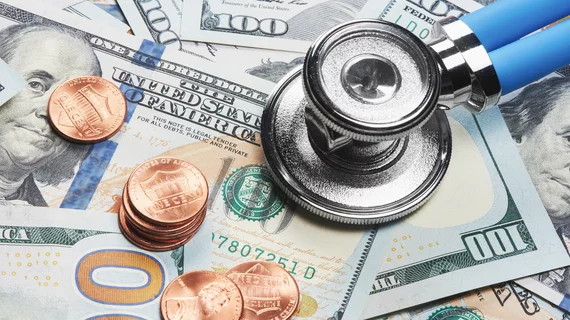Hospitals and health systems face ‘dire’ financial situations
Financial operations have turned dire for hospitals and health systems, according to a recent report that reviewed significant revenue losses and rising costs.
The new report, Hospital Double Whammy: Less Cash In, More Cash Out, was compiled by the Crowe Revenue Cycle Analytics (Crowe RCA) platform. It examined challenges healthcare providers are currently facing, with mounting cost pressures and declining revenue.
The report underscores other recent findings that hospitals are likely to report billions in losses by the end of the year thanks to a combination of environmental factors.
Healthcare revenue slashed
One of the biggest concerns for hospitals and health systems is a decline in revenue. That is partly due to the six-month lag in getting paid, a measurement of the expected case a healthcare provider collects within six months of the date of service. Since the onset of the COVID-19 pandemic, providers are seeing less revenue collection in a six-month period.
In the summer of 2021, hospitals collected on average 97% of their expected cash within six months. In the same period in 2022, that dropped to 94%, and that 3% drop, coupled with a 9% increase in expenses, has led to a 12% negative impact on a health system’s finances, the report found.
"Even if a medical claim isn't denied by payors, hospitals are struggling to collect expected revenue months after a service is provided," Colleen Hall, managing principal of the healthcare services group at Crowe, said in a statement. "Between increasing pressures and mounting expenses, including rising employee costs brought about by inflation and staffing shortages, hospitals' finances are taking a hit."
Crowe also measured open accounts receivable (AR) to see how long claims are remaining open––and how long providers are waiting to get paid. The total proportion of receivables that have aged more than 90 days has grown to 37% in August 2022, up from 32% in January 2021.
“Imagine the frustration of calling to check on the status of 37% of a paycheck and then waiting more than 90 days to receive it,” the report stated. “This 5-percentage-point jump directly affects the cost of care, but none of the cost is related to the actual cost of caring for the patient.”
In addition, healthcare providers are seeing higher rates of claims denials, when payors are processing claims, but not providing payment. In 2021, Crowe found an initial denial rate of 10.2%. That figure has reached 11% in 2022, which translates to 11,000 unpaid claims for an average size health system. Even a small increase in claims denials can increase the burdens on providers to resolve the denial and get paid. One of the biggest reasons for more denials is an increase of prior authorization requirements. Prior authorizations have increased from 1.5% of gross revenue in January 2021 to 2.5% in August 2022.
Furthermore, healthcare providers are experiencing more takebacks, when payors retract previous payments made to providers after an audit is complete.
“From January 2021 through June 2022, payor takebacks averaged 1.4% of debit AR a Month,” Crowe reported. “But that percentage jumped to 1.8% in both July and August of 2022. For added context, this equates to more than $1.6 billion in takebacks per month for providers on the Crowe RCA benchmarking platform.”

